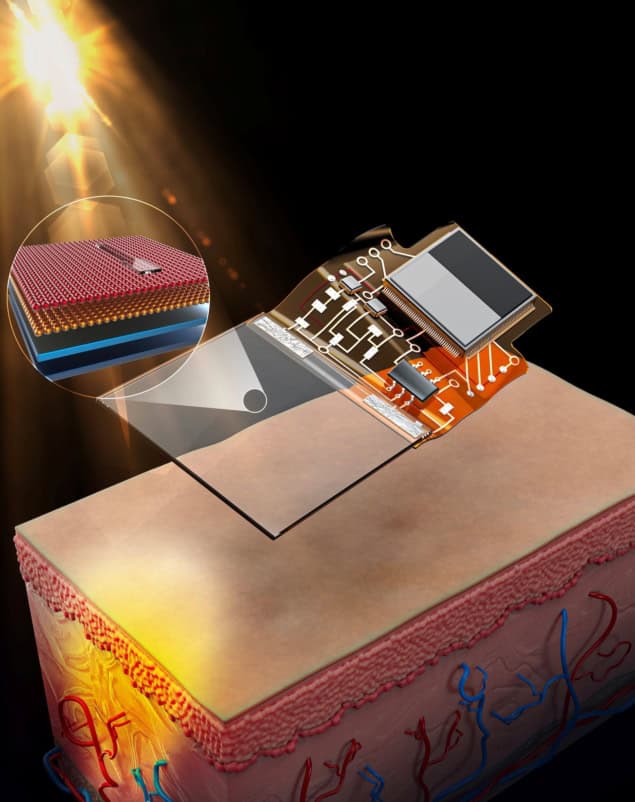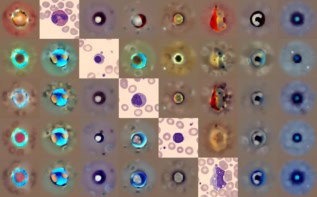
A flexible and wearable sensor that allows the user to monitor their exposure to ultraviolet (UV) radiation has been unveiled by researchers in South Korea. Based on a heterostructure of four different oxide semiconductors, the sensor’s flexible, transparent design could vastly improve the real-time monitoring of skin health.
UV light in the A band has wavelengths of 315–400 nm and comprises about 95% of UV radiation that reaches the surface of the earth. Because of its relatively long wavelength, UVA can penetrate deep into the skin. There it can alter biological molecules, damaging tissue and even causing cancer.
While covering up with clothing and using sunscreen are effective at reducing UVA exposure, researchers are keen on developing wearable sensors that can monitor UVA levels in real time. These can alert users when their UVA exposure reaches a certain level. So far, the most promising advances towards these designs have come from oxide semiconductors.
Many challenges
“For the past two decades, these materials have been widely explored for displays and thin-film transistors because of their high mobility and optical transparency,” explains Seong Jun Kang at Kyung Hee University, who led the research. “However, their application to transparent ultraviolet photodetectors has been limited by high persistent photocurrent, poor UV–visible discrimination, and instability under sunlight.”
While these problems can be avoided in more traditional UV sensors, such as gallium nitride and zinc oxide, these materials are opaque and rigid – making them completely unsuitable for use in wearable sensors.
In their study, Kang’s team addressed these challenges by introducing a multi-junction heterostructure, made by stacking multiple ultrathin layers of different oxide semiconductors. The four semiconductors they selected each had wide bandgaps, which made them more transparent in the visible spectrum but responsive to UV light.
The structure included zinc and tin oxide layers as n-type semiconductors (doped with electron-donating atoms) and cobalt and hafnium oxide layers as p-type semiconductors (doped with electron-accepting atoms) – creating positively charged holes. Within the heterostructure, this selection created three types of interface: p–n junctions between hafnium and tin oxide; n–n junctions between tin and zinc oxide; and p–p junctions between cobalt and hafnium oxide.
Efficient transport
When the team illuminated their heterostructure with UVA photons, the electron–hole charge separation was enhanced by the p–n junction, while the n–n and p–p junctions allowed for more efficient transport of electrons and holes respectively, improving the design’s response speed. When the illumination was removed, the electron–hole pairs could quickly decay, avoiding any false detections.

Personalized UV sensors monitor sun exposure
To test their design’s performance, the researchers integrated their heterostructure into a wearable detector. “In collaboration with UVision Lab, we developed an integrated Bluetooth circuit and smartphone application, enabling real-time display of UVA intensity and warning alerts when an individual’s exposure reaches the skin-type-specific minimal erythema dose (MED),” Kang describes. “When connected to the Bluetooth circuit and smartphone application, it successfully tracked real-time UVA variations and issued alerts corresponding to MED limits for various skin types.”
As well as maintaining over 80% transparency, the sensor proved highly stable and responsive, even in direct outdoor sunlight and across repeated exposure cycles. Based on this performance, the team is now confident that their design could push the capabilities of oxide semiconductors beyond their typical use in displays and into the fast-growing field of smart personal health monitoring.
“The proposed architecture establishes a design principle for high-performance transparent optoelectronics, and the integrated UVA-alert system paves the way for next-generation wearable and Internet-of-things-based environmental sensors,” Kang predicts.
The research is described in Science Advances.



